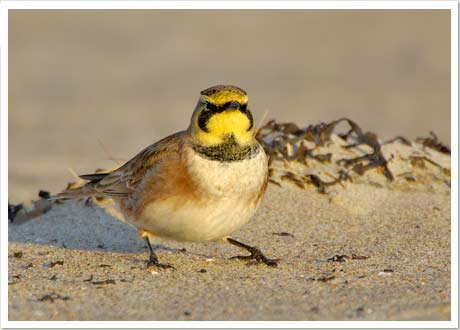|
 |
 |
 |
 |
| Sandy beaches are dynamic systems, constantly reshaped by shifting sands from wind, ocean waves and currents. Shorebirds that breed in this habitat lay their eggs in shallow scrapes in the sand, and forage for food in beach wrack. During winter months, sandy beaches frequently become cobble shores. |
 |
 |
|
 |
 |
|
|
 |
 |
 |
 |
 |
 |
 |
|
| Horned Lark |
PHOTO: 1 2 |
 |
|
 |
 |
| Horned Larks are present year-round. In the spring, several pairs breed on the beach, but only observers who arrive at dawn are likely to hear their twinkling flight song or catch a glimpse of one sneaking into the dunes to tend its nest. Horned Larks are most common from late fall to early spring, when other species of birds from further inland and north arrive to spend the winter. Horned Larks feed mostly on seeds, sometimes associating with Snow Buntings at the dune edge. |
|
|
|
|
|
|